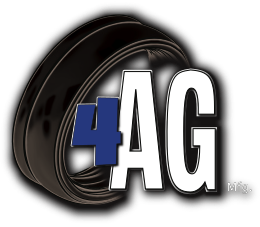A Brief Comparison Between Till and No-Till Planting
Farmers have prepared their fields for seed planting using a plow with rear blade gauge wheel for thousands of years. This tilling process turns the soil upside down and drags the nutrients to the soil surface, it buries residue of the previous years’ crops for breaking down later.
In a number of shapes and styles, like the moldboard plow, disc chisel, disk ripper, chisel plow, this simple principle of soil prepping continues to this day. Most farms were organic until the late 1940s and early 1950s, focusing on tilling for weed control, crop rotation for nitrogen control and loss prevention, and using green compost to cover crops to boost soil structure and fertility.
Tilling
Tillage, by mechanical agitation of different kinds, such as stirring, digging, and overturning, is the agricultural preparation of soil. Picking, shoveling, mattock work, raking, and hoeing are cases of human-powered methods of tilling by using hand tools. Rototilling, ploughing, rolling with cultivators or other rollers, harrowing, and cultivation with cultivator shanks are examples of draft-animal or mechanized work.
The deeper and more thorough tillage is graded as principal, and the shallower and often more selective tillage is secondary. Primary laying, such as ploughing, tends to create a coarse surface finish, while secondary laying tends to create an even surface finish, such as the one needed for many crops to make a good quality seedbed. In one process, harrowing and rototilling sometimes combine principal and minor tillage.
Tillage is the other name of the tilled land. The ‘cultivation’ word has multiple senses that overlap the tillage sustainability. They may both refer to agriculture in a general sense. Within agriculture, any kind of soil agitation may apply to both.
Tillage effects
Loosens and aerates the soil top layer or horizon A, which encourages the crop planting.
It helps to uniformly blend crop residue, organic matter (humus) and nutrients into the soil.
Destroys weeds mechanically.
Dry the soil prior to seeding (in wetter climates tillage aids in keeping the soil drier).
As carried out in autumn, by frosting and defrosting, uncovered soil crumbles over winter, helping to prepare a smooth surface for spring planting.
No-till Farming
No-till farming, despite the erosion caused by wind and water evaporation, does away with the harm done to the soil by tilling. Runoff, which contains chemicals like herbicides and fertilizers, is capable of killing birds and is toxic to species that live in water, and is almost removed when tilling is finished. No wonder no-till farming has taken hold for biological reasons. One might then argue that it would be popular among organic farms. It is not like that. Chemicals must be used without the mechanical weed control linked to tillage. Today, agricultural companies specializing in genetically customized crops are the main supporters of no-till cultivation.
In a no-till operation, weed control relies profoundly on the chemical application. 10-45 days before planting, pre-emergence chemicals are normally applied. Spring rain also tends to turn on the herbicides used at that time.
Other considerations to consider are crop type; root crops such as potatoes, for example, perform best in mechanically tilled fields. Field shape can be a determining factor, as it is easier to till square fields. The odd-shaped fields are easier and tougher to manage if it is possible to implement no-till. Soil conditions can be best suited for no-till vs. regions that are wetter and where tilling helps to get rid of excess water, such as in geographic regions that are more arid. Crop rotation is also important, with most experts recommending no more than two seasons of corn-on-corn before a switch.
No-Till Advantages
Reduced need for tractors and tillage machinery
Reduced use of fuel
Reduced compaction of soil
More flexibility for planting time
Perfect for arid regions
Reduction of soil erosion
Reduced field and stream runoff and pollution
Construction of a balanced network of soil ecosystems
See us at 4ag Manufacturing with rear blade gauge wheel. Prepare your soil for the next farming season.

